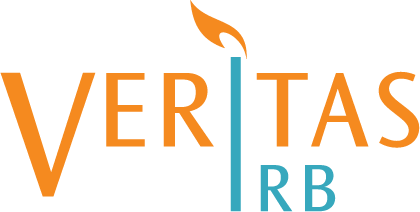It is refreshing to see policy changes influenced by the evolution of science as opposed to crisis. The increased engagement of research participants in research coupled with increasing complexities in the research landscape have catalyzed revisions to the Common Rule.
Inspired by the Belmont Report, the Common Rule was developed to ensure that research involving humans was conducted in accordance with the highest ethical standards and practices. A prominent feature of the Common Rule is the requirement for informed consent of a competent research participant in addition to safeguarding those unable to provide consent, and respecting the research participant’s autonomy and capacity for choice.
For the first time since its 1991 publication, the Common Rule has been modernized. The revised version includes new requirements, many of which increase flexibility by alleviating burdens on researchers.
One way that alleviates burdens on researchers is the elimination of the need to re-consent research participants when their biological specimens and associated personal information will be used for purposes other than what they had originally consented to do. For instance, the revised Common Rule allows research to be performed on previously-collected biological specimens without informed consent as long as the specimens are not linked to an individual or are identifiable.
Both the revised Common Rule (United States) and the Canadian Tri-Council Policy Statement (TCPS) reference identifiable biological specimens in their definitions of a human subject. Requirements for the waiver or alteration of informed consent under both the revised Common Rule and the TCPS treat identifiable personal information and identifiable biological specimens in the same fashion.
Where the two countries differ is in what constitutes identifiable personal information. Any research in the United States where the identity of the individual may not be “readily ascertained by the investigator” or “associated with the information” collected is exempted from the application of the revised Common Rule. This exemption would include any research involving information that is anonymous (the information was never identified to a person) or anonymized (the information was stripped of any direct or indirect identifiers that would allow for re-identification).
In Canada, the TCPS only exempts ethics review requirements for research involving anonymous information. This means that, in Canada, if you are planning to use information from which direct identifiers have been stripped off (anonymized information), your project must undergo ethics review.
The second important distinction is that the revised Common Rule excludes a deceased person from its definition of a “human subject” as it specifically refers to a “living individual”. This means that research conducted in the United States on tissues from individuals who died after the collection of the samples, or research on stored samples that were collected after death, do not require investigators to obtain consent or to request ethics approval from an ethics committee. In Canada, the TCPS specifically states that research involving materials derived from a deceased individual must be reviewed by an ethics committee.
Currently, and more explicitly, once the revised Common Rule becomes effective next year, trans-border research collaborations involving anonymized biological specimens or biological specimens from deceased individuals require planning to prevent non-compliance.
| Biological Specimens Exempted from IRB Oversight | |||
| Anonymous | Anonymized | Deceased | |
| United States | YES | YES | YES |
| Canada | YES | NO | NO |
Henrietta Lacks was an African-American woman who died of cervical cancer in 1951. During her care, her treating physician removed cells from her cervix without her consent in order to further his research interests. This research led to the discovery of the first immortal cell line (HeLa cells). HeLa cells have been used around the world ever since and have become an essential tool in medical research allowing for countless discoveries and inventions that have shaped modern medicine. While science and its industries were flourishing as a result of her immortal cells, Henrietta Lacks’ family struggled financially and never benefitted from the considerable profits generated by the commercialization of her cell line.
Ironically, the tragedy of Henrietta Lacks was the motivation behind some of the revisions to the Common Rule. But as this example illustrates, her fate would be the same today under the revised Common Rule. In Henrietta’s case:
- her cells were collected as part of clinical care
- her cells were identifiable
- Henrietta did not provide any directive as to the future use of her cells
- research on her cells was conducted after her death.
In the United States, the proposed research on Henrietta’s cells would be exempt from the Common Rule as the deceased is excluded from the definition of a human subject. Therefore, the cells could be used for an indefinite number of research projects without any ethical oversight.
In Canada, the proposed research would be subjected to ethics review and oversight. The ethics committee would assess whether the proposed research is scientifically and ethically acceptable and assess whether or not consent from an authorized third party would be necessary.
One could argue that, if this were to happen today, Henrietta Lacks could have given “broad consent” while she was alive for the future use of her cells, a new provision under the revised Common Rule. However, the scope and mechanics of this new provision and the protection it confers to research participants’ biological specimens are matters for a future blog posting.
About the Authors

Martin Letendre
Martin Letendre is responsible for managing Veritas IRB's business operations and administering the activities of the Veritas IRB Boards. Martin is a member of the Quebec Bar and brings more than a decade of experience in health law and research ethics. His expert knowledge of, and ongoing activity and interest in research ethics have led to the publication of several reports and articles in peer-reviewed journals, and invitations as guest speaker at numerous conferences and scientific meetings. Martin was actively involved in the creation of an on-line tutorial for institutional research ethics boards in Quebec and was a member of Canada's three federal research agencies' Panel on Responsible Conduct of Research.


